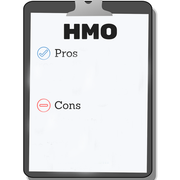HMO Tips
Open enrollment for 2017 Individual Plans finally came to a close at the end of January. This is the fourth open enrollment period for individual insurance since the Affordable Care Act reforms started to take effect in 2014. This has been a tumultuous era. Millions more people have coverage but many are paying more for their coverage and are not satisfied with their alternatives due to narrower networks of physicians and other providers and more overall restrictions.
In some states, and notably in the New York Metropolitan area, many Plans have limited their offerings to “Gated” HMOs. Individuals who have had these HMO plans for several years have become used to the rules these plans impose. But for others who are new to HMOs, the road to effective use of these plans can be fraught with hard learned lessons. We hope some of these tips can help you or someone you care about effectively use a new HMO Plan.
About Networks:
Quite simply, HMOs will only cover services you receive if your provider is in-network. The only out of network coverage you are entitled to is in response to an urgent medical need or a serious medical emergency. For example, if you are vacationing outside of your plan’s network and your child has an ear infection, your plan should consider your urgent care visit as in-network. If you suffer a heart attack, the ambulance will take you to the nearest facility and this will be covered regardless of the network status of the hospital or ambulance.
About Primary Care Physicians (PCPS):
Most HMOs require that you select an in-network PCP. If you don’t select one, one will generally be chosen for you. Even if you did select one on your application, verify with the insurance carrier that they actually processed that request and it is showing in their system.
Selecting an in-network primary care physician and making an appointment with that person is important, even if you intend on using an out of network physician for regular visits. The reason for this is that you will need an in-network PCP to refer you to specialists if you need to see one and often for expensive testing like an MRI. It is not unusual for a PCP to be scheduling appointments for new patients a month in advance or even farther out. If you wait to make an appointment with your PCP until you need to see a specialist, you may find yourself in the unfortunate position of deciding on whether to wait for an appointment with your PCP or to see your specialist without a referral – and possibly paying full price for that.
About Lab Work:
Another important provider who should be in-network is the laboratory your physician sends tests to. Usually, in-network physicians will send lab work to in-network labs. However, if you see an out of network physician, they may very well send your lab work to an out of network Lab, resulting in full priced bills for this service (and Lab charges can be substantially inflated). Please verify which labs are in-network with your plan and ask that your tests are sent to one of these labs. Two of the largest Lab companies are Quest and LabCorp, so start with checking on the status of those labs.
About Medications:
Many medications require that the prescribing physician obtain prior approval before the insurer will pay for their share of the medication. Please inquire with your insurer as to whether any of your medications require prior approval. If they do, you will generally need an in-network physician to complete this task for you – another reason to establish a relationship with a PCP.
In Closing:
Anyone under 65 with individual insurance understands that the individual market has been transformed over the last four years, in some positive but also challenging ways. For many, options have changed from year to year and have become more limited. Nevertheless, it is important to be informed about networks and rules in order to avoid incurring unexpected out-of-pocket medical expenses. Please call us if you have further questions or if we can be of help.




